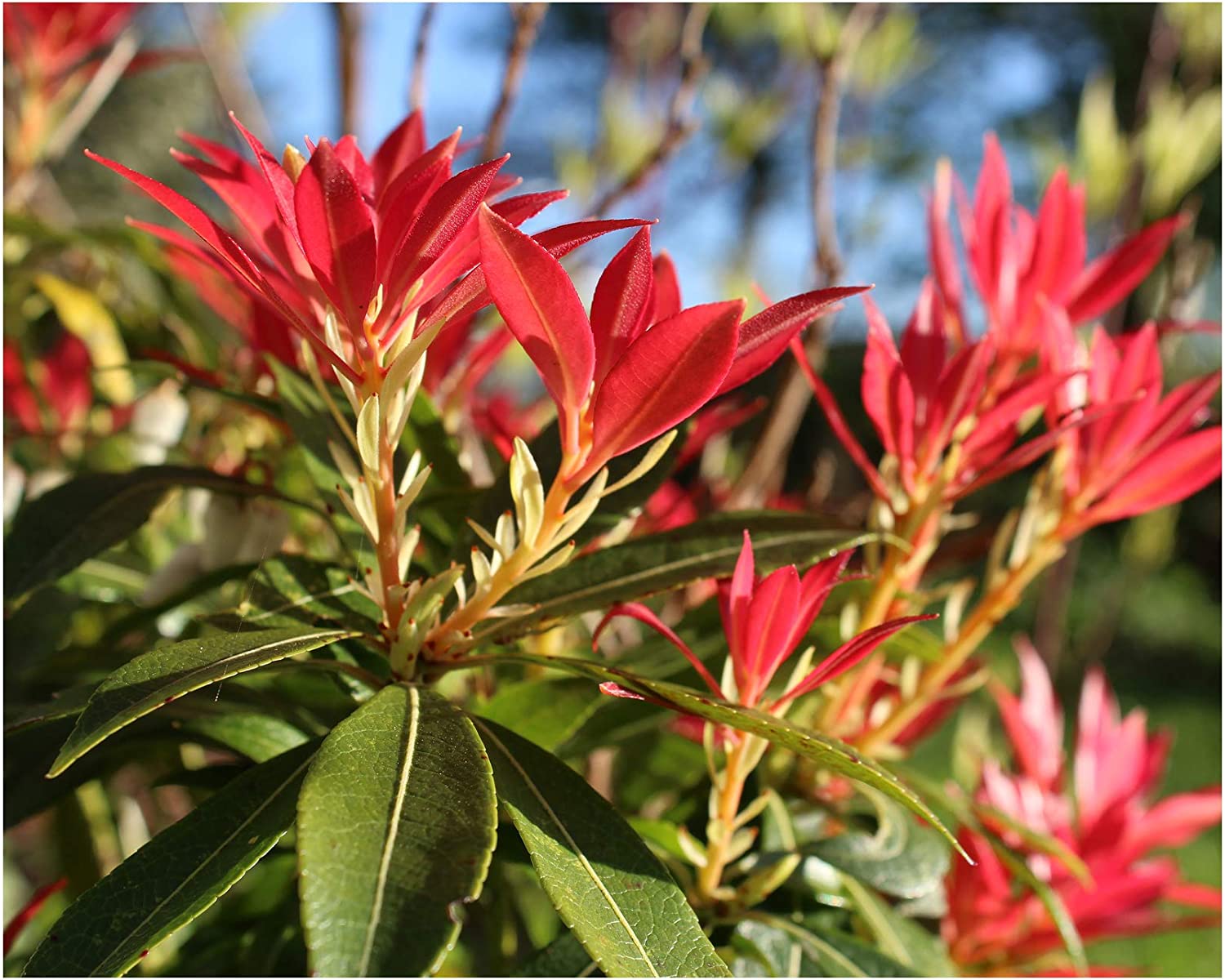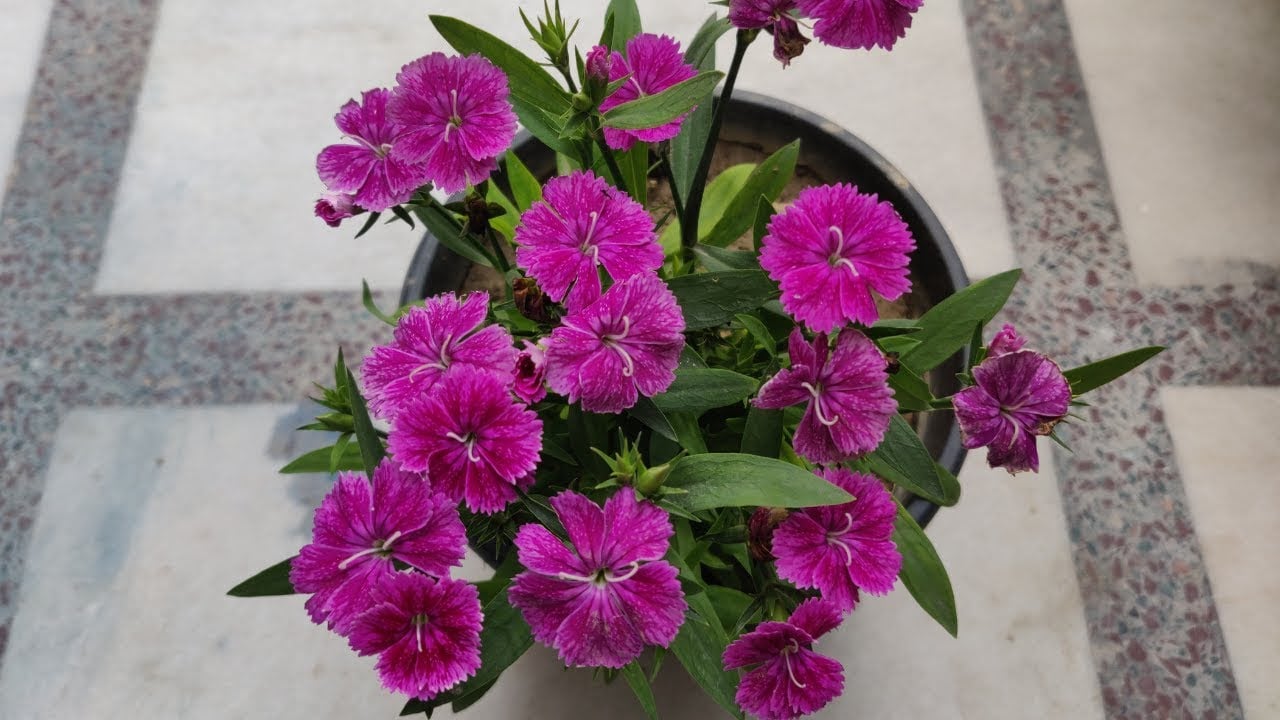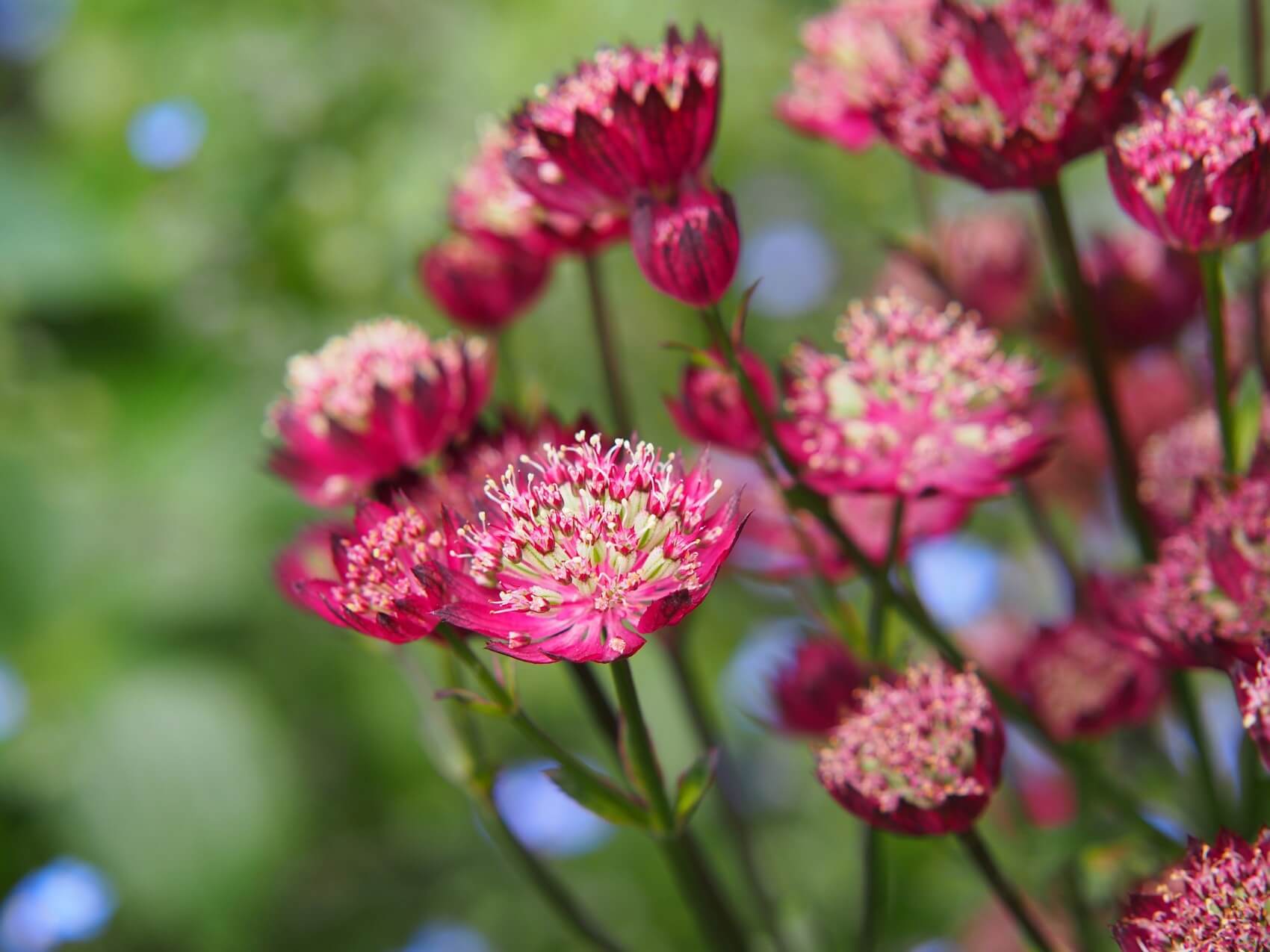How to Grow and Care for Arborvitae ‘Thuja’
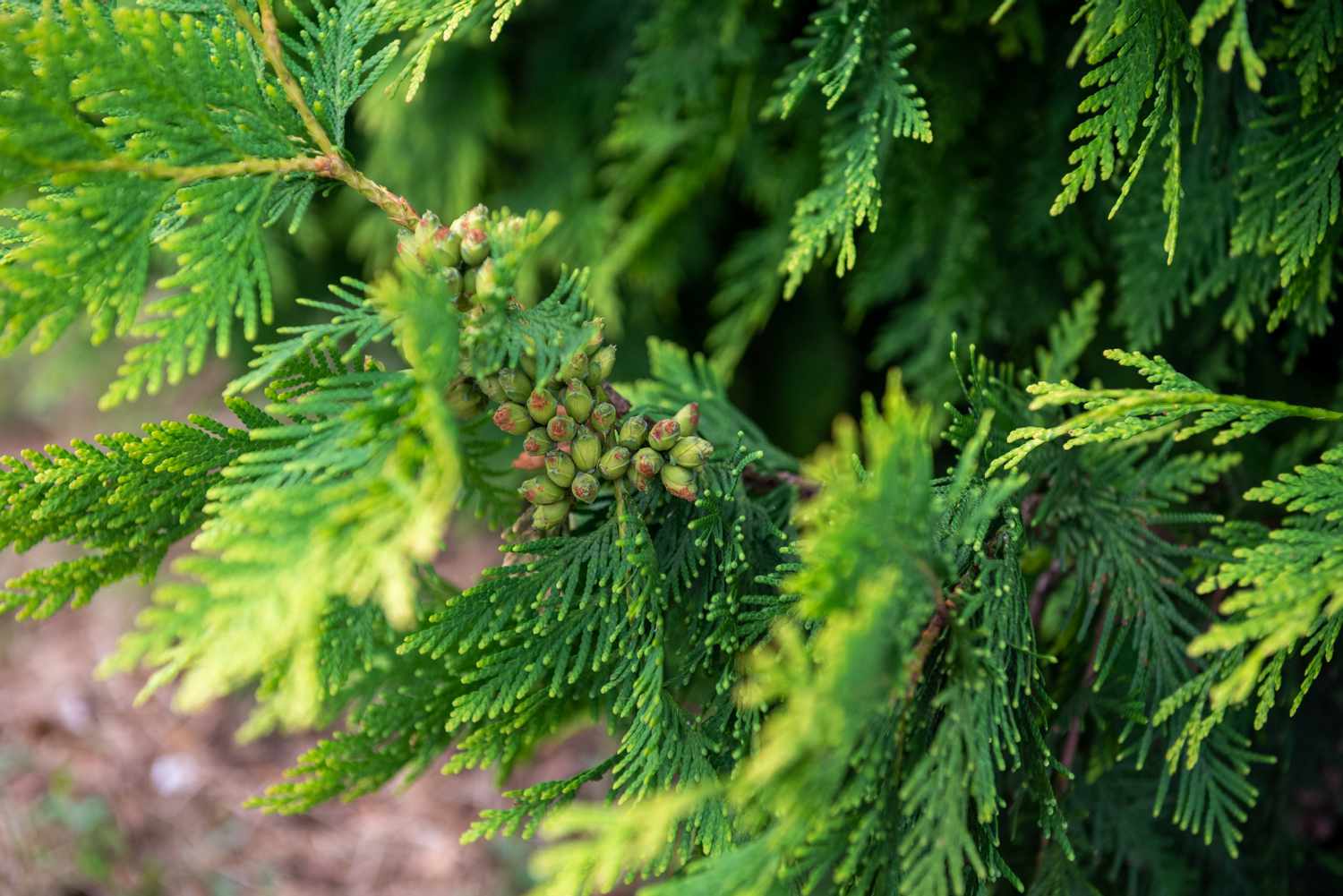
Table of Contents
There is no better way to fence your garden other than planting tall, dense trees at its edges to create beautiful, green hedges around the place. They are useful not just to keep animals and humans from peeking into your garden but also to help reduce noise pollution from traffic and other areas.
It safeguards your garden from wild animals, as the plants and trees will be too tall and too dense for anyone to enter. Further, they also offer good quality air in your garden by keeping the pollution and dust particles coming from outside.
What if you can plant this tree by yourself and grow it? In this article, you are about to see how you can grow a green, tall, and beautiful arborvitae plant by yourself and take care of it with minimal effort. But first, let’s learn more about the ‘Thuja’ plant.
Arborvitae – Thuja Plant
Thuja plant- Arborvitae is a coniferous plant that attracts birds from all around and offers a beautiful place for them to hang out. It is available in various varieties different in their shapes, sizes and growth, but the most popular ones are Thuja Occidentalis, called Northern white cedar, and Thuja Plicata, also known as the western red cedar.
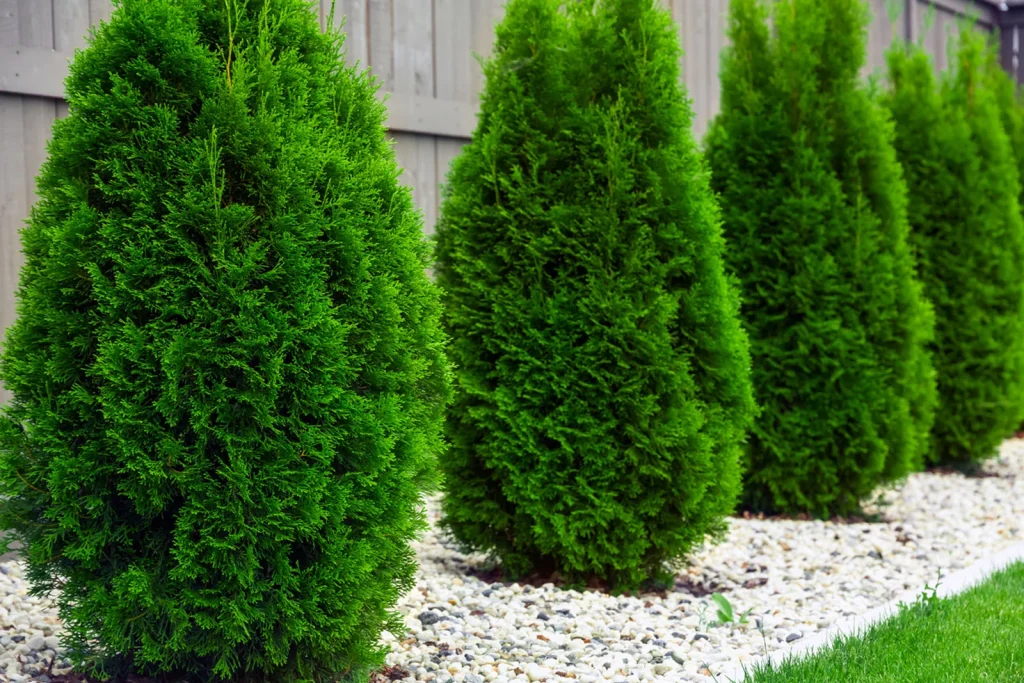
Even though there are multiple species of thuja plant, the main principles of planting them and taking care are almost the same. Hence, you can choose the one that suits your garden the best in terms of height, growth, and weather conditions and yet practice the same type of care for it.
Arborvitae ‘Thuja’ Care & Growing Tips
Along with being easy to grow, these plants are budget-friendly if you don’t want to make a hole in your pocket. They give good returns without asking for a lot of effort from you.
A few of the arborvitae can grow up to the height of a few meters, whereas a lot of them are small shrubs that you can grow in containers and pots in your garden.
Here are a few ways in which you can take care of your Arborvitae plants and get a good return on a low investment.
1. Best Time to Plant Thuja
The beautiful Arborvitae plant must be planted in the fall season. It ensures that the roots are well-grown before the winter arrives as it gives harsh weather conditions for the plant. Further, you must avoid planting them in extreme heat conditions as it will give some heat stress on the roots impacting their growth.
2. Best Place to Plant Thuja
It is pretty clear by now that the arborvitae plant should be placed in hedges in your garden. But you must also ensure that the soil at that place is moderately moist and well-drained in complete or partial sunlight. This is an important aspect if you are planting a tree in the ground. However, if you are planting them in a small pot, you must get the soil of the required quality. You must also remove the grass, rocks, weeds, and all other kinds of debris in the soil for the growth of a healthy plant.
How to Plant the Arborvitae – Thuja Plant?
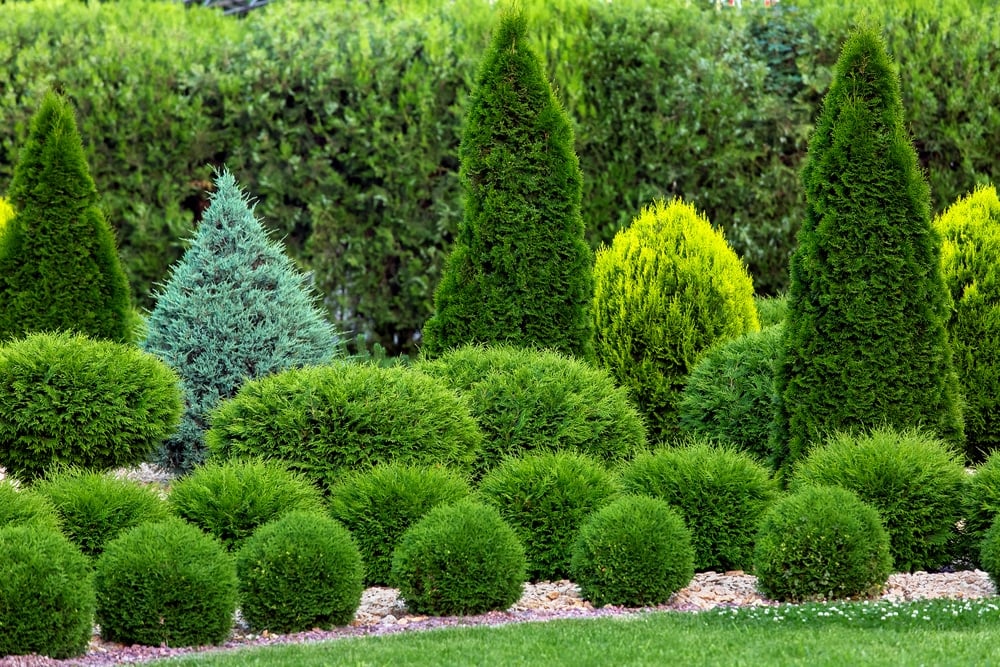
- Whether you are planting it in the ground or a pot, dig the soil for almost 2 inches in the ground of manure or compost. The planting hole must be 3 times deeper and wider than the root ball.
- Now lose the roots in the root ball.
- Take your arborvitae sapling and place it in the hole you have created. You must ensure that the top of the hole must be at the same level as the top edge of the root ball.
- Now again, fill the soil around the root ball with your hands and soak the soil in the hole after you fill half of it.
- File the top edge of this root ball and then water it well such that the roots are well moist.
- At last, you can add a layer of pine straw or aged shredded wood mulch for about 2 inches around the arborvitae plant to help it retain moisture. However, you must not put the mulch directly against the stem.
Different Varieties of Thuja Plant
1. Brandon

Brandon’s variety of thuja plants takes a conical shape and can reach up to a height of 15 inches and a width of 8 inches. The tree is completely green in colour and has scale-like foliage. It has a mild fresh smell. This variety is not very picky with the soil type as long as you ensure to water regularly. Also, help the water reach the root ball by watering it for a few minutes continuously.
2. Emerald Green
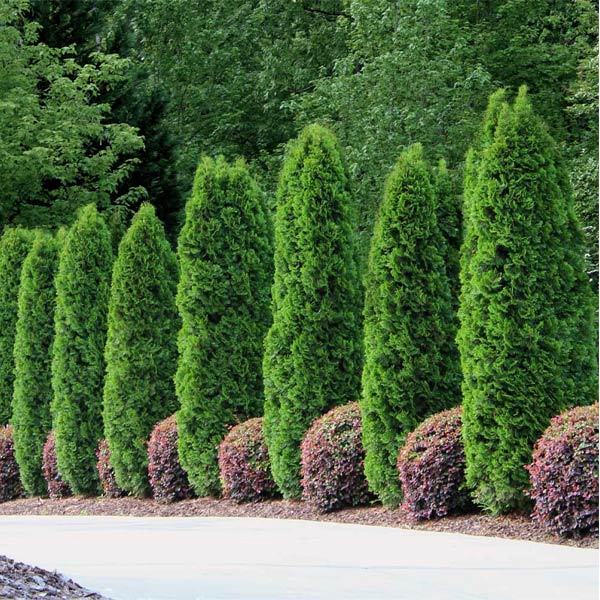
If you are looking to fence your garden or if you want to plant a thuja plant near your house, this is the variety that is best suited for you. It grows 15 feet tall and reaches 4 feet wide. It looks like a tall and thin column of emerald green foliage.
3. Art Boe
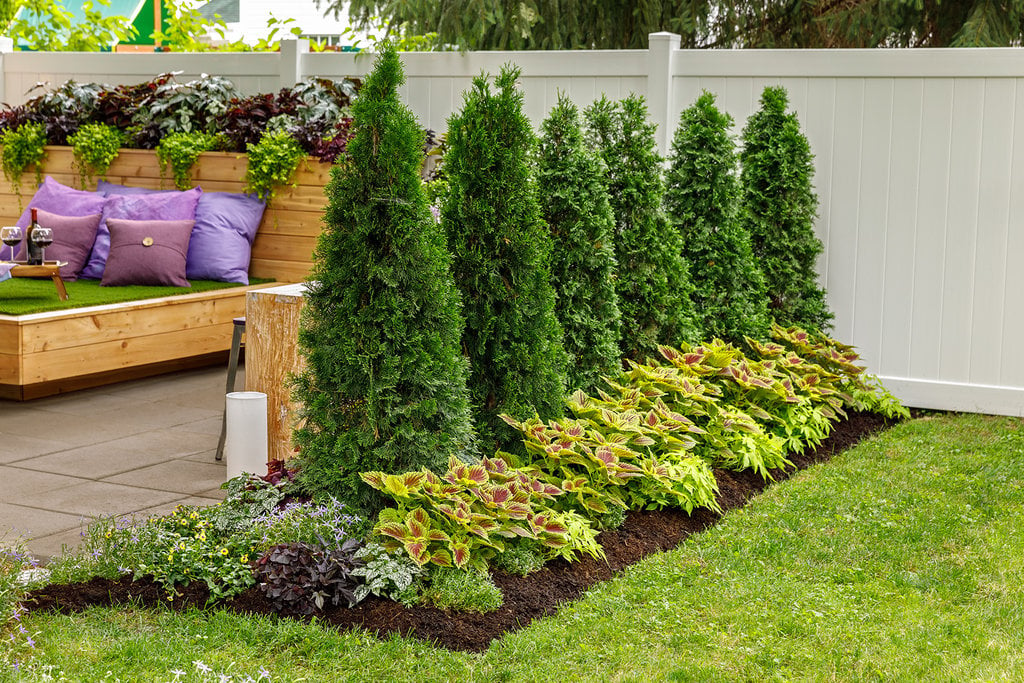
Art Boe is an arborvitae that is narrow and upright. It is also called the North Pole arborvitae. This is the one that can be planted easily in containers and pots. It grows up to 15 feet height from the ground.
4. Hetz Midget
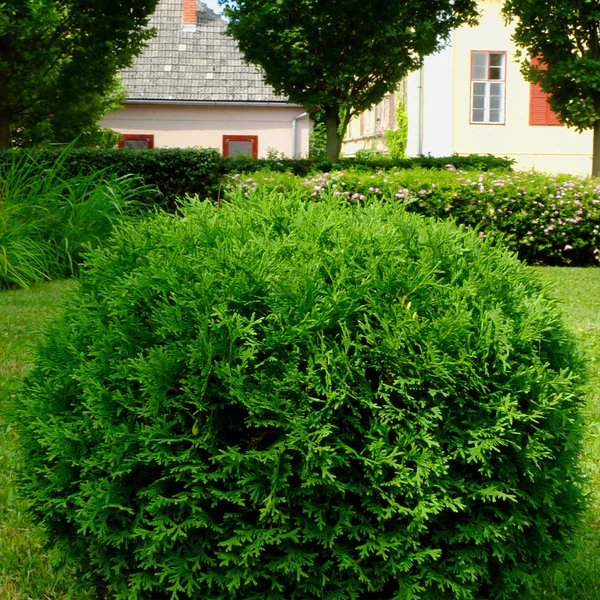
Hetz Midget is a dwarf kind of thuja plant. It does not grow very tall and stops up to the height of 4 feet. This plant can be shaped into a sphere making it a great choice for a foundation plant.
5. Tom Thumb
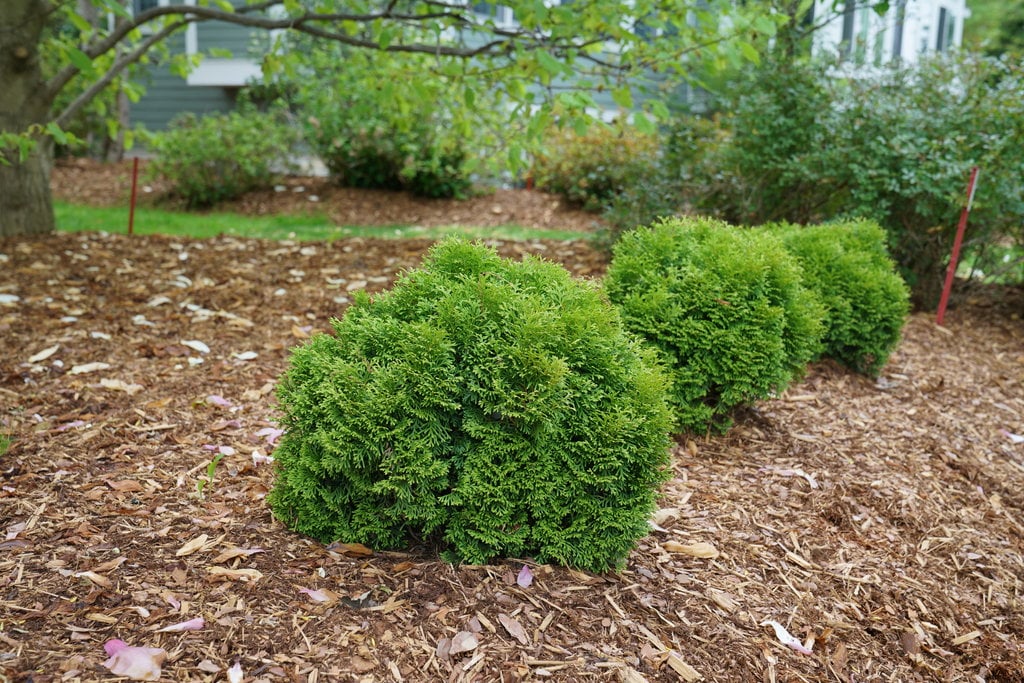
Tom Thumb is a dense multi-stemmed shrub that takes a rounded form. It is another great choice if you want to build a house garden. You can plant them in pots, containers, or rock gardens.
Pruning of Arborvitae
Arborvitae is a plant that grows dense and tall. Hence it is important to prune the plant occasionally such that it does not overgrow or cause any problems to the plant. You can also prune the plant in desired shape or size to decorate your garden fence the way you want. It removes the dead leaves and other unwanted contents of the plant.
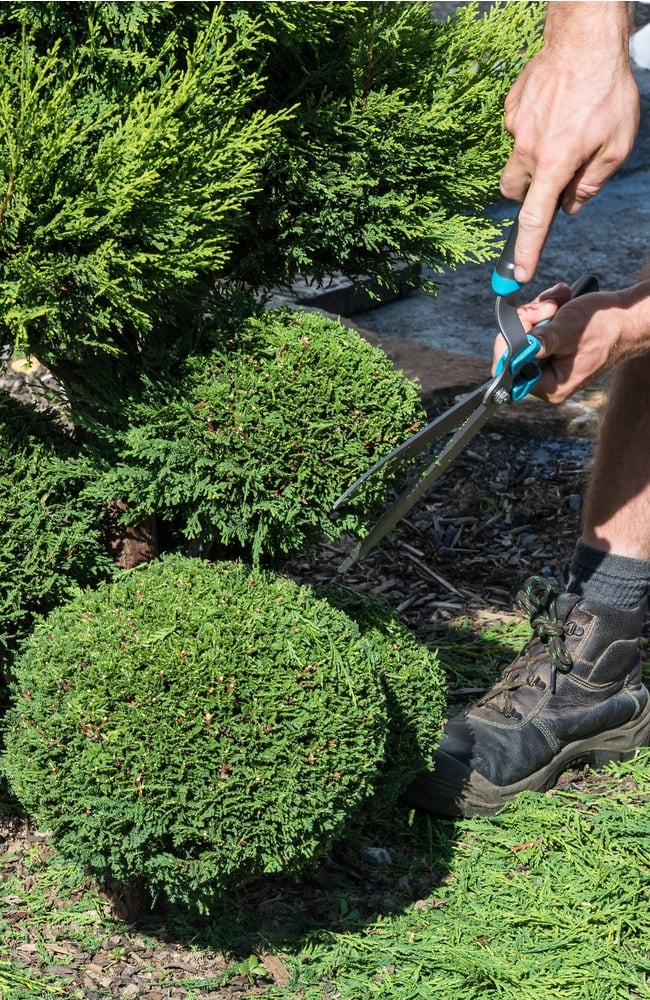
If you are planning to prune the plant, it must be done in months of early spring. This will help the plant to stay neat in the desired shape. Also, it will encourage thick growth of the plant. This will also help in removing the dead branches and parts of the plant and keep the plant from decaying. Further, it will improve air quality and sunlight in the plant by helping them reach the hidden parts.
Even if you shape your tree as you want, you must maintain its natural way of growing, which is wider at the bottom and tapering inwards while going at the top. If you are a little adventurous, you can also prune the garden to the shape that forms spiral topiaries.
Winter Care for Arborvitae
Even though these plants are cold-hardy, there is no harm in taking extra winter care of them along with other plants from your garden. They can surely benefit from this care, especially before they have matured.
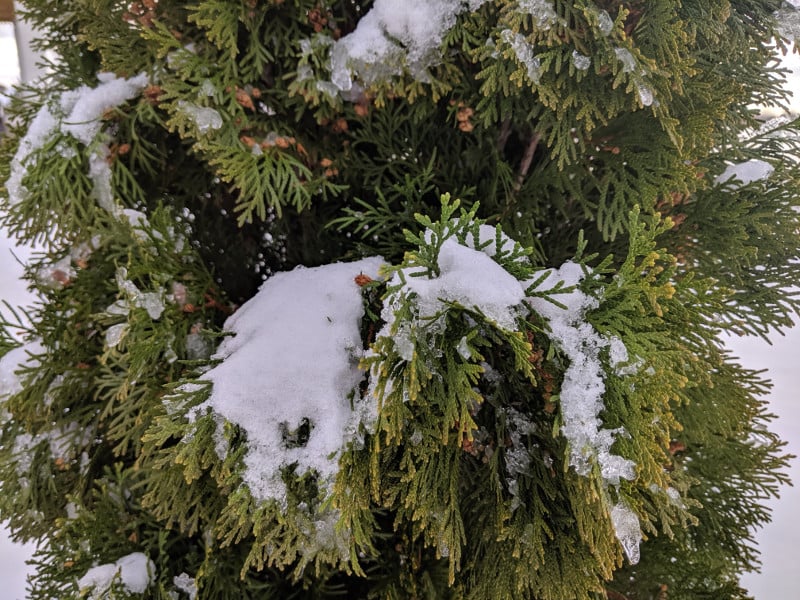
If you stay in a region where there is snowfall, you must ensure good care because the ice can cause the breaking of stems.
Moreover, the plant must be looked after even in the summer season as the drought, high temperatures, and plunging can even lead to browning and drying out of leaves. In such cases, the mulch that you have placed in the soil can keep the roots protected and help to retain moisture in the ground.
You can preserve the stems by tying them with twine. You can protect these plants from wild animals by wrapping them with burlap around the stake’s circle.
How to take care of the Thuja Plant?
Arborvitae is one of the easy-to-maintain plants, but you must not miss out on watering it regularly. You must ensure that the water reaches the roots of the plant and keeps the soil moist for a long duration. If the roots do not receive the water they need, they are likely to dry out and hence damage the plant.
1. Watering
The quantity of water required for the thuja plant depends on its age and size. As these plants mature, you must water them on alternate days for a few minutes for water to reach the root ball. In this way, you can ensure that the plants do not dry out or turn into brown or yellow color, giving a clear sign of water insufficiency.
You must avoid watering the plant if you plant in the winter season. There is no requirement for water if the temperature of your surroundings is less than 10 degree Celsius. If you are a resident of the UK, you must not water the plants from November to March.
2. Feeding
After you ensure that the plants and roots are receiving a good amount of water, you can use a liquid fertilizer that will enhance the new growth of leaves. Also, it will keep the plant away from any kind of damage or fungus.
If you have planted it in winter, do not feed the plants until it is spring season, i.e. around April. This is the time when these plants began to grow again, and hence fertilizer would encourage new growth.
A burlap tree is a helpful addition to your thuja plant as it keeps the branches in place. A young thuja plant comes with a risk of splitting, especially in harsh weather. Mature thuja will develop a root stem to support itself, but it would not be happening anytime before two years of its age. After three years of planting, it becomes a good and fully established plant that doesn’t require support.
What Are Common Problems Associated with Arborvitaes?
1. Browning of leaves
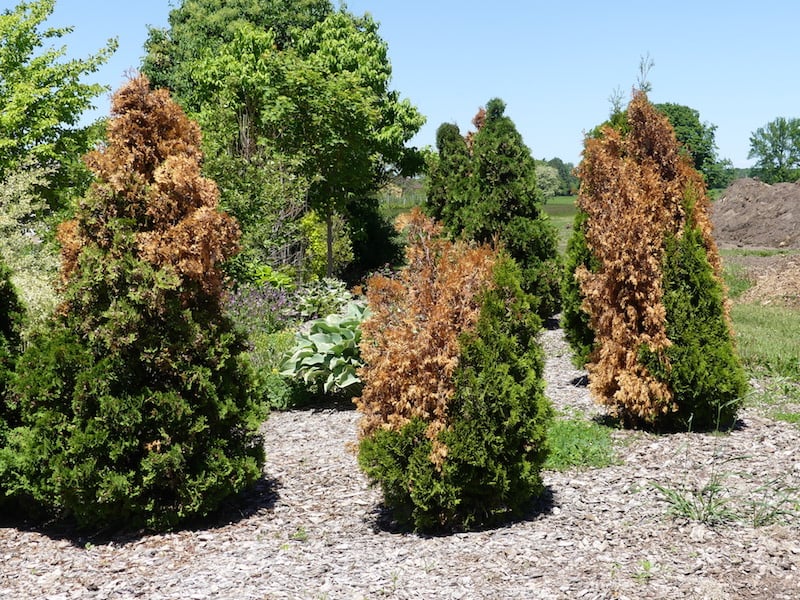
Arborvitae looks beautiful in their vibrant emerald green colour, and you wish they would stay that way throughout the year. But usually, in the summer season, the leaves turn to a brown-yellowish shade due to the lack of water or high temperatures. Even in winter, if the soil dries out, you must provide the plant with little water to keep it green throughout the season or to avoid any damage because of it.
2. Dropping Needles
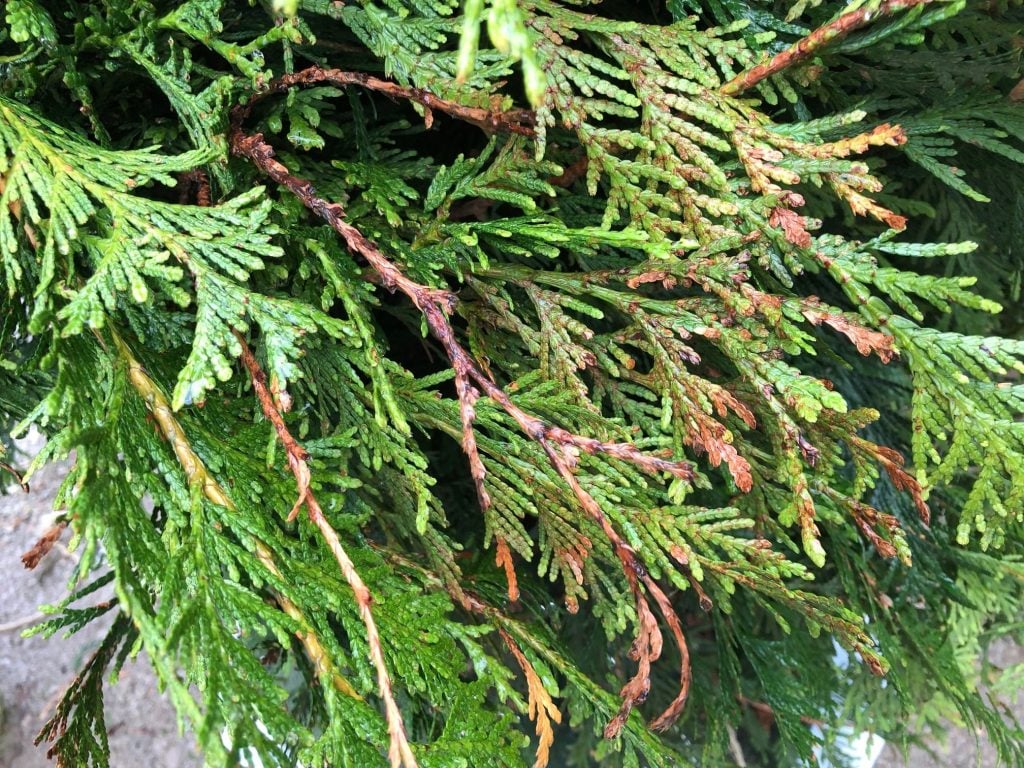
If you see the leaves of the thuja plant, you will notice that they are small needle-like structures. Every year, the plant will give away some needles by dropping them. It will seem as if the plant is browning completely from the interior and exterior. But in reality, this browning is completely expected. These needles are likely to be collected in the trunk of the plant or interior stem. You must clean these needles well from the place to prevent rotting caused by the needles that are decomposing around the stem.
3. Loss of Foliage
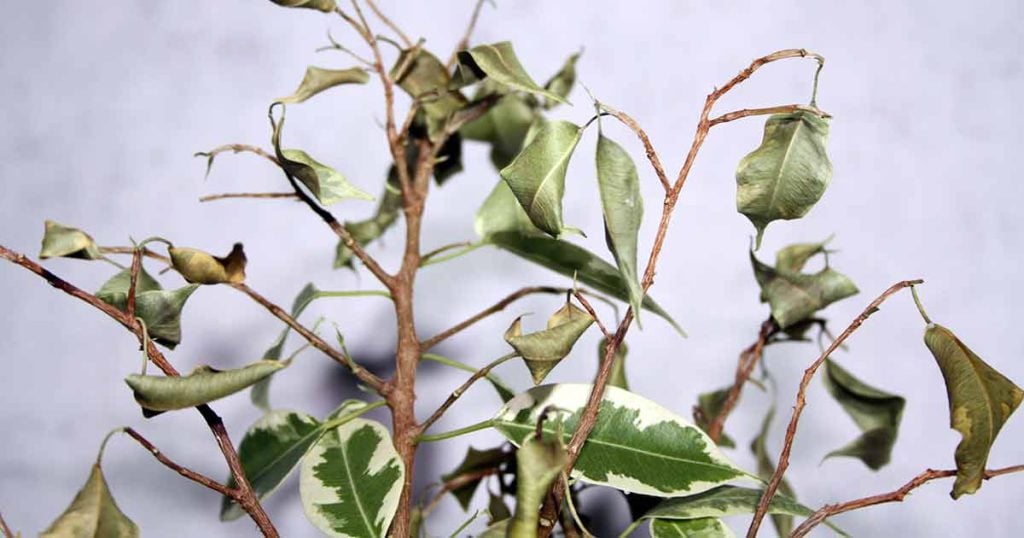
Bagworms are caterpillars usually found at the tree top and find their way downward in the thuja plant. They defoliate the tree, create ‘egg bags’, eat the leaves and leave bare branches. If they are not treated well, they are likely to kill the plants. In such cases, to protect your plant, you must remove all the egg bags you see on the tree. You can also use a pesticide to keep your plant safe from other such insects and pests. In the case of bagworms, you can use neem oil as it acts as a good organic pesticide that can kill bagworm larvae.
Health Benefits of Thuja Plant
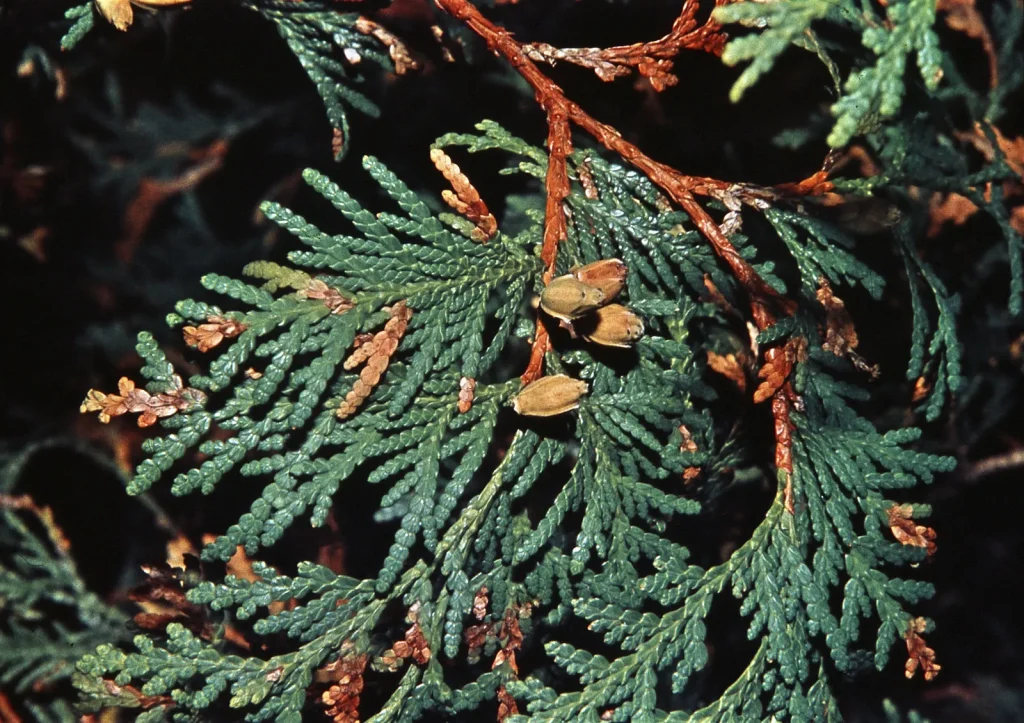
Various plants have health benefits for humans to cure various diseases or play a part in food items, home decor, interiors and various other things. Likewise, the Thuja plant has multiple health benefits.
Thuja leaf oil and leaves can be used in several medicines.
- It contains chemicals that can fight viruses.
- It can be directly applied to the skin to cure joint pains, muscle pains, etc.
- It can be used to loosen phlegm
- It helps to boost the immune system
- It can be used against skin diseases and warts
- It can work as an insect repellant
- It can also be used as a flavouring agent in food and beverages.
Conclusion
There is a wide variety of arborvitae found in our surroundings, depending on your area. You can choose the one that best suits your requirements. If you want a tall conical plant for fencing or a short one for creating a well-curated garden, you can take that variety and plant it.
As we have discussed, planting and growing a thuja plant is not a very demanding process, but you must water it regularly such that the water reaches its roots and soil.
If you have any experience with planting a thuja plant in your garden, share your experience with us in the comments section.

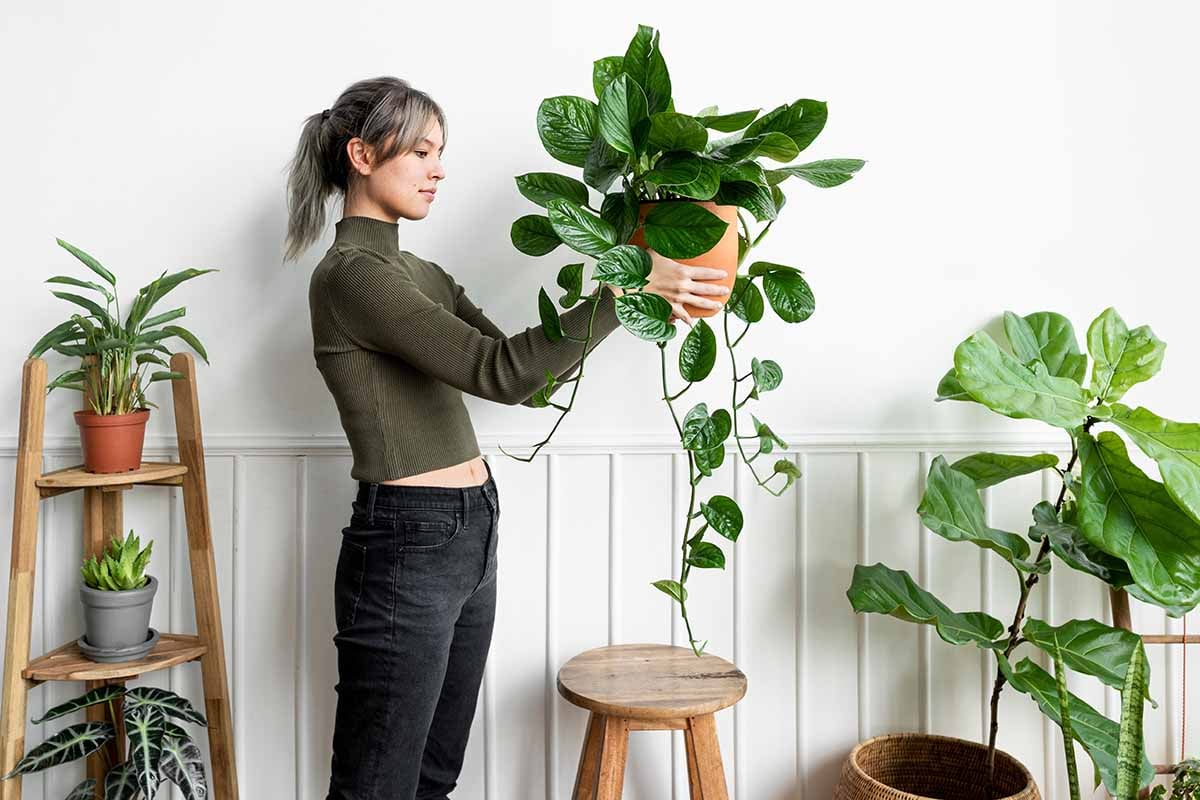
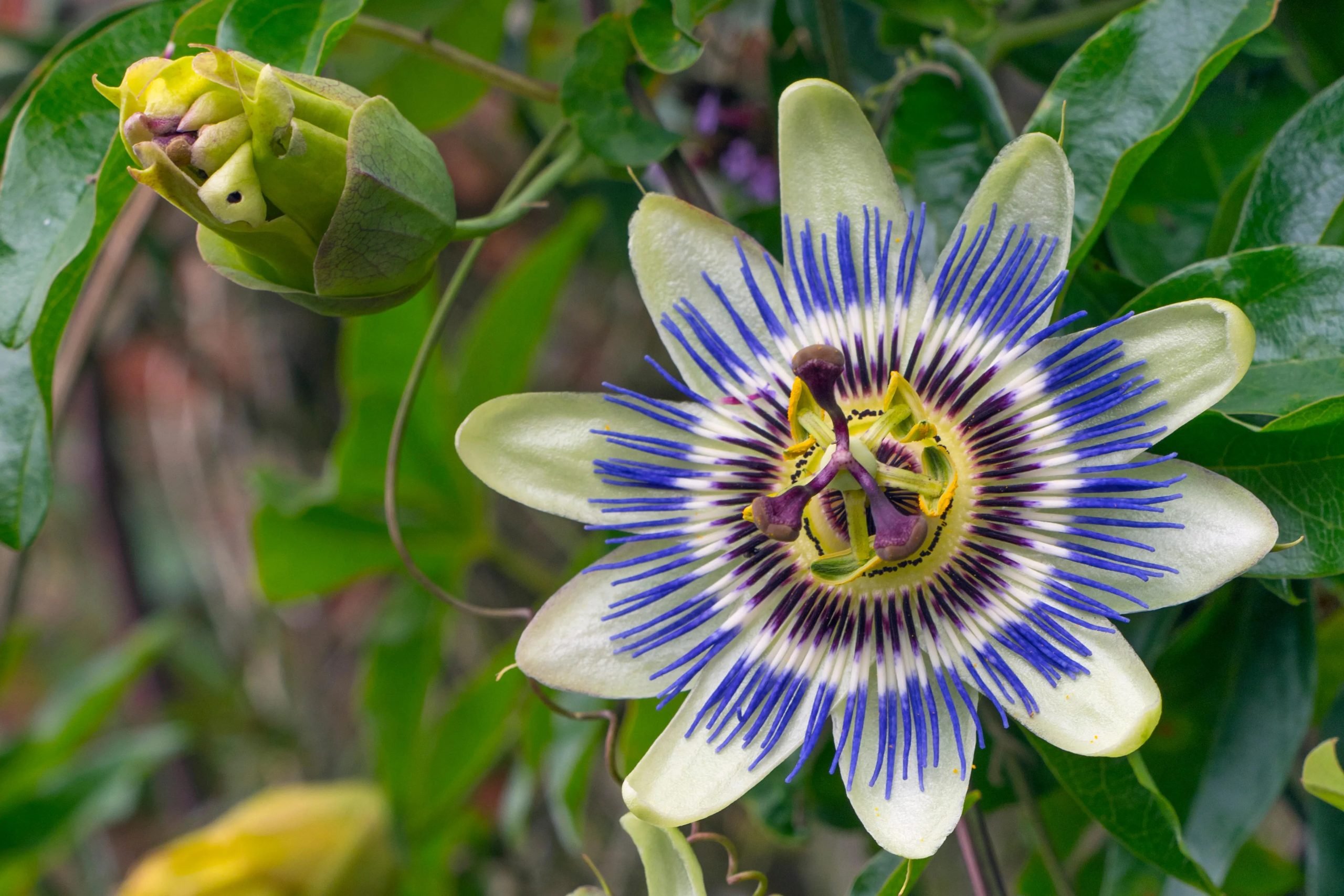
![A Beginner’s Guide to Monstera ‘Swiss Cheese Plant’ [With Caring Tips]](https://staging.thearches.co.uk/wp-content/uploads/Monstera-Swiss-Cheese-Plant-Care-Tips.jpeg)
